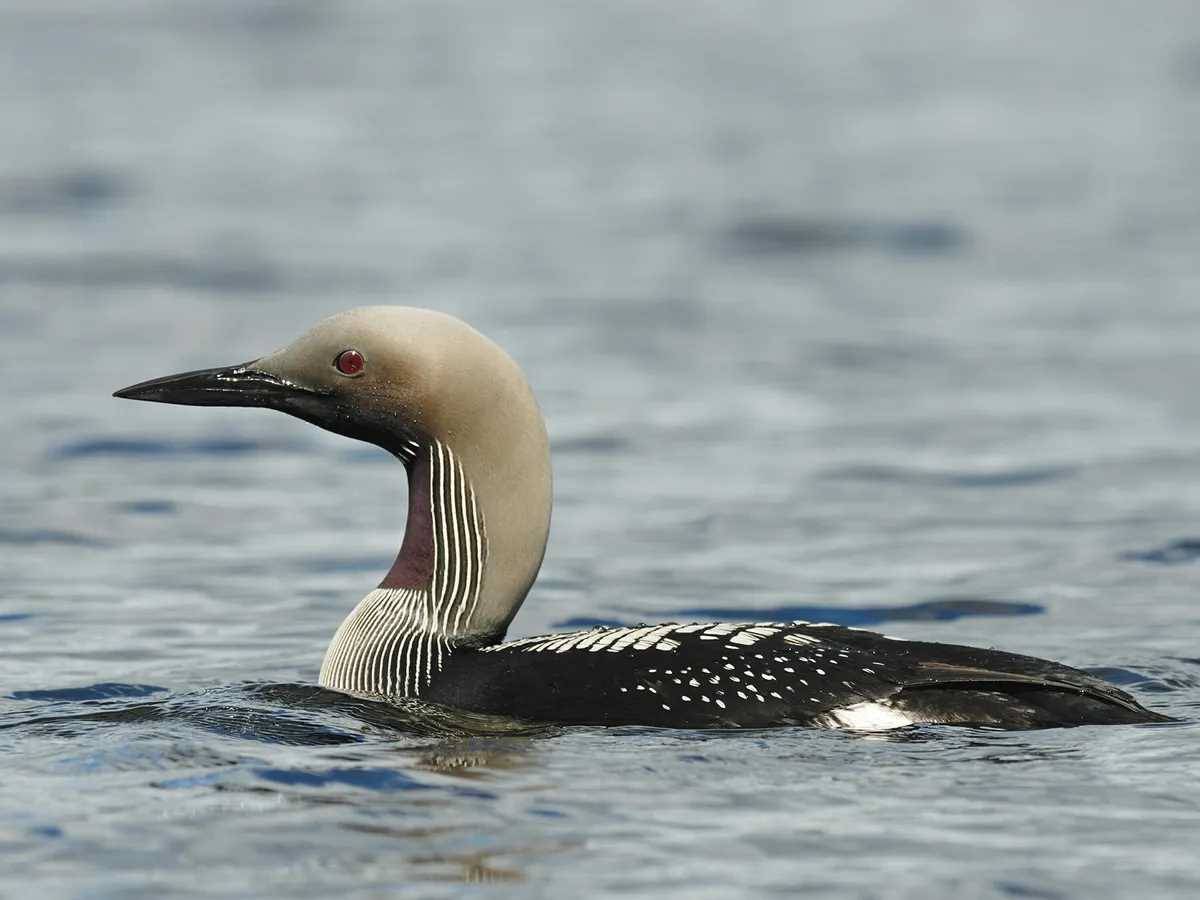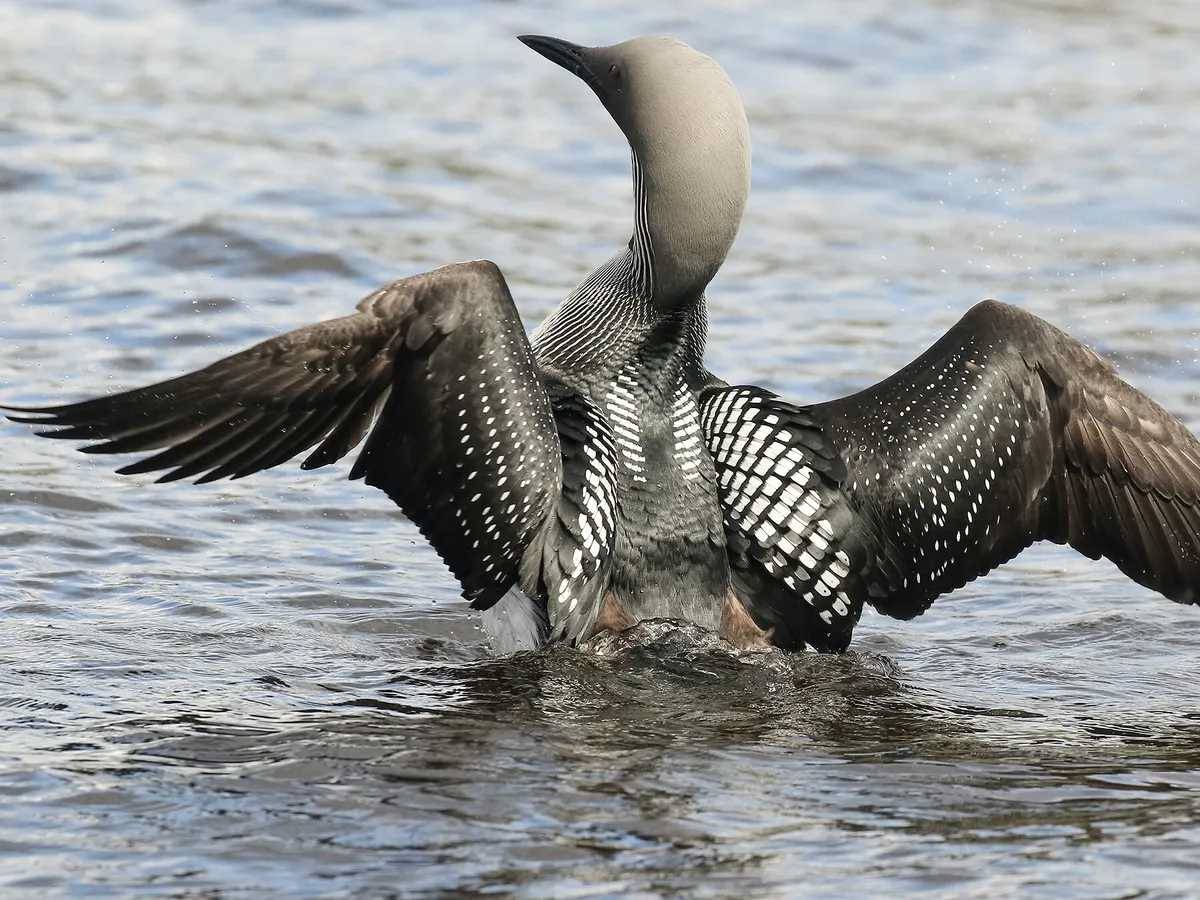

One of only five species of Divers or Loons, the northern hemisphere's Arctic Loon has a particularly spectacular monochrome patternation in its breeding plumage, covering its neck, chest, mantle and scapulars.

In adult breeding plumage, the upper parts are predominantly black with white squares across the mantle at the base of the neck and the shoulders. The head and neck are a soft grey with narrow black and white stripes on either side of the neck running vertically, from an area level with the chin, to almost in line with the top of the chest.
There are two sub-species, one having a black throat and the other a green throat. The base of the throat and top of the chest have thin white vertical parallel lines on black, morphing into a white middle chest and remaining underparts, including the flanks.
At the top of the throat, there is a short spotted necklace of white dots which run horizontally under the chin. The bill is dark grey, and the legs are black and set far back on the body, making walking difficult but swimming and diving an art form.
The iris is a dark red contrasting easily with the smoky grey head.
In non-breeding (winter) plumage, the adult has a white throat and loses the white patternation across the mantle and shoulders.
Adult males and females are similar in both plumages. The juvenile bird is predominantly dark brown with a light brown head and white flanks.

Arctic Loon in winter plumage
During the breeding season the adult male calls with a loud, long wailing sound similar to, 'oooooweeee – oooooooweeee'.

Arctic Loon calling on the water
An extremely proficient diver, the arctic loon dives deep down for fish, its favoured diet, although it will also take aquatic invertebrates, crustaceans and plants.

Arctic Loon diving for food
The bird's breeding region extends predominantly across Northern Eurasia from Scandinavia south to the United Kingdom and across arctic Russia and Siberia to Kamchatka.
Of the two sub-species, Gavia arctica viridigularis also breeds in Russia and in North West Alaska on the Seward Peninsula. This particular sub-species can be identified by its green-coloured throat.
It migrates to the North West pacific coast and also Korea whilst the nominate overwinters in the Baltic, Atlantic, North Sea coasts, South to the bay of Biscay and areas within the Mediterranean, Southeast China and Japan.

Arctic Loon in flight
Arctic Loons are generally solitary birds although will gather in small flocks during the summer.
The bird is clumsy on land due to the position of its legs and has to take off and land on water, running along the surface whilst flapping its wings.
It is, therefore, rarely, whilst on dry land, far from the water's edge. Whilst swimming, its sits quite low with the minimum amount of body above the surface.

Arctic Loon from behind with spread wings
The start of the breeding season in the northernmost regions occupied by arctic loons is heavily dependent upon the Spring thaw.
A simple nest, consisting of a shallow scoop sited adjacent to the water's edge or a more ambitious floating arrangement constructed from mud and waterside vegetation, are prepared by both parents.
One brood of 2 eggs variously shaded in brown are produced annually and incubated predominantly by the male for between twenty-three to twenty-eight days. Fledging occurs up to two months later.

A pair of Arctic Loons with a chick

The lifespan for an arctic loon is up to twenty years.
